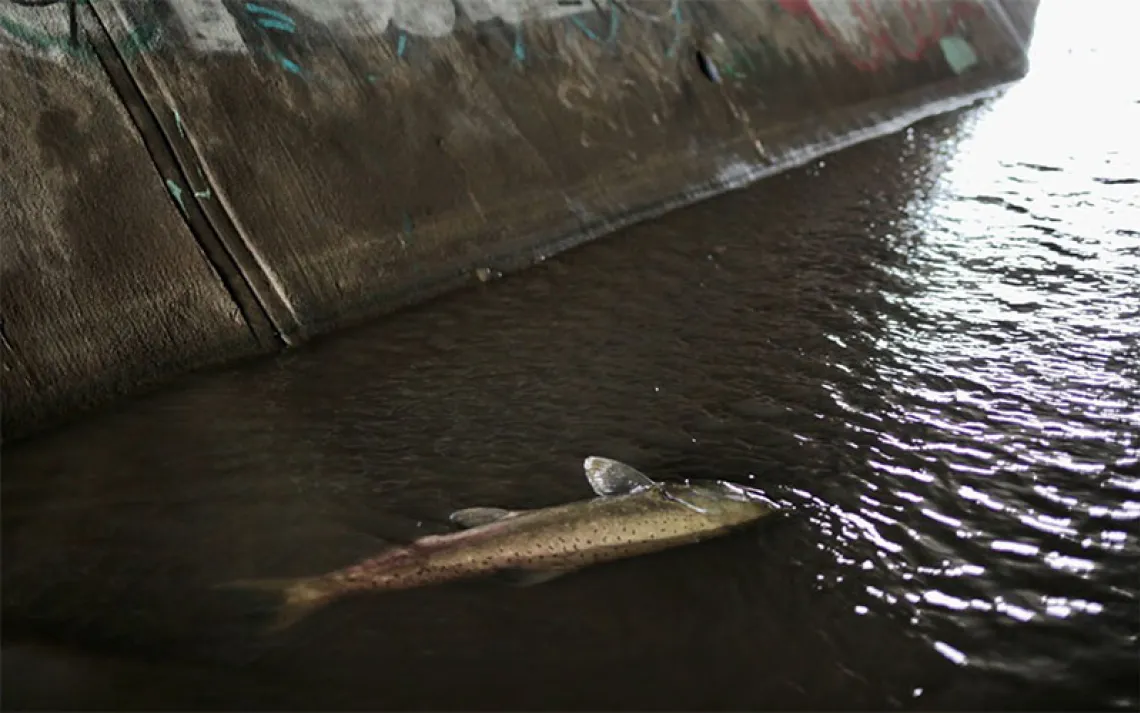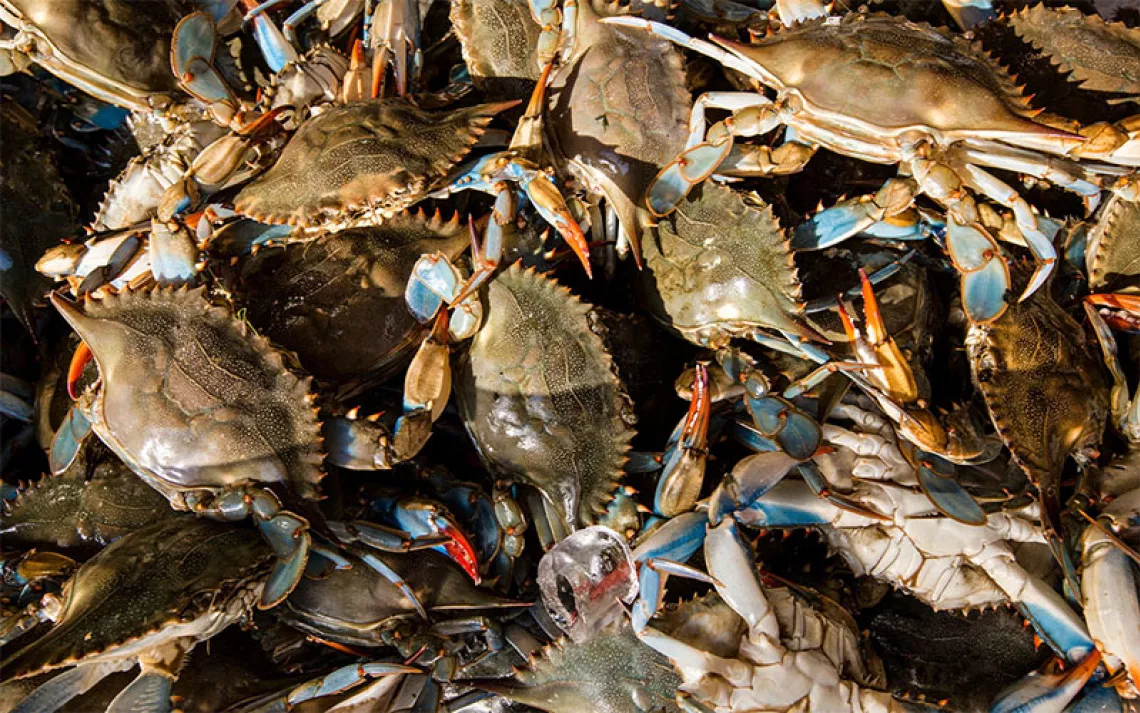Heeding the Pandemic’s Warnings
The trade in legal wildlife is a ticking time bomb
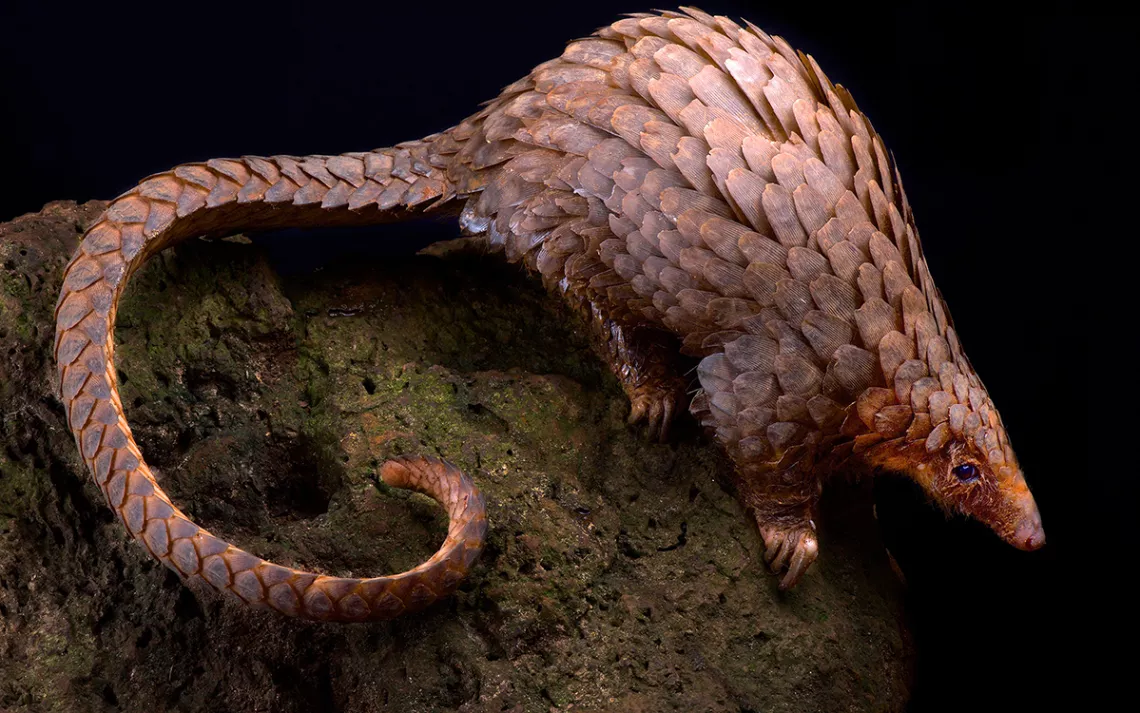
Pangolin
When Katey Hedger walked into the Satria Bird Market in Bali in March 2021, the first thing to hit her was the smell. “There were droppings everywhere, all over the floor, and the floor was wet,” Hedger says. “I tried my best not to touch anything.”
While browsing the market, Hedger—the Indonesia project lead for the Little Fireface Project, a nonprofit group focused on civet conservation—saw for sale live reptiles, fish, puppies, kittens, guinea pigs, rabbits, and other rodents. But the hundreds upon hundreds of birds were the main event. In 10 or so open shops, Hedger counted at least 50 species kept in filthy floor-to-ceiling cages. “My main shock was just how many birds were in each cage,” Hedger says. “They really were crammed so full, and all of the birds were agitated and trying to get out.”
Hedger noted, too, that none of the shop keepers wore masks, and neither did most of customers, some of whom were parents with small children. “COVID isn’t really a concern here, unfortunately,” Hedger says.
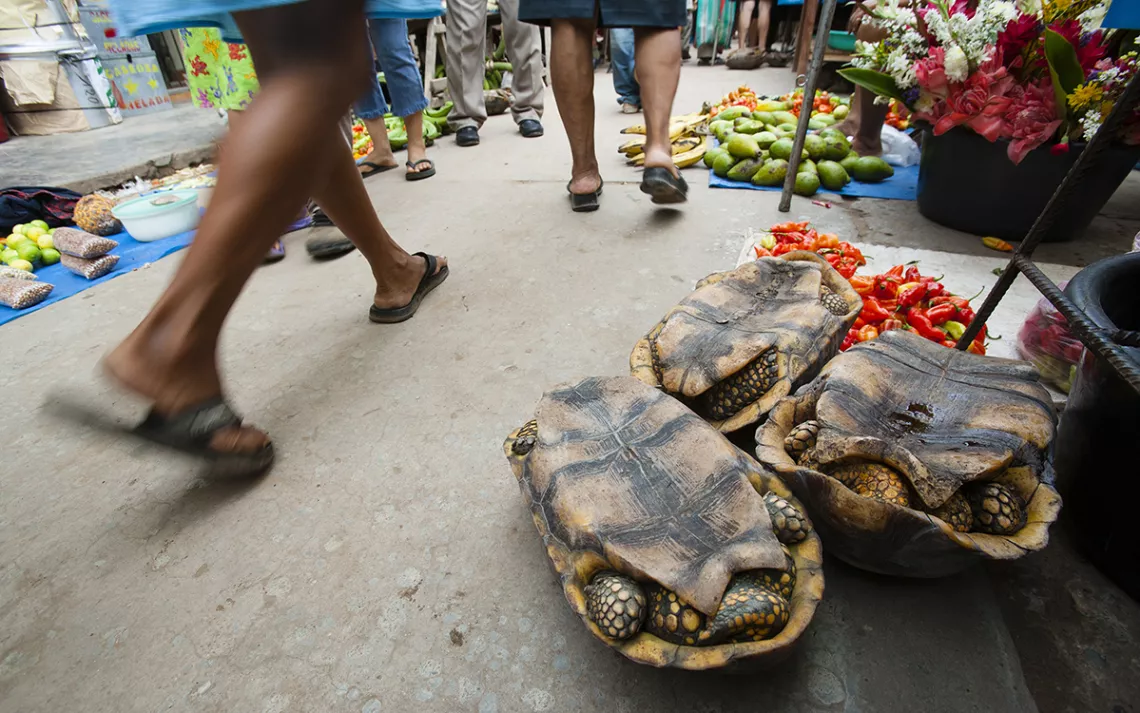
Yellow-footed tortoises (Geochelone denticulata) for sale at Yurimaguas Market, Peru, in November 2006. | Photo by Cyril Ruoso
An estimated 100 major live animal markets and countless smaller ones are operating across Indonesia. Similar markets in other countries and regions—from Laos and Bangladesh to the Amazon and Central Africa—have also resumed operation, if they were ever closed at all. The next pandemic could very well spring from one of these places. When this will happen is impossible to predict—it could be tomorrow, or it could be next year—but without significant changes in how we approach wildlife trade, it will almost certainly happen.
Up to 75 percent of all emerging infectious diseases come from animals, primarily from those that live in the wild and come into contact with humans through trade, exotic animal farming, or deforestation. Experts have been warning about the disease risk of these activities for at least three decades, so for weary scientists, COVID-19’s almost certain link to wildlife, and very likely link to legal trade, came as no surprise. As the new coronavirus reached pandemic proportions, they once again began to insistently remind the world of the need to clamp down on the reckless ways in which we deal with—and deal in—wild animals.
Yet now, more than a year and a half after the pandemic began, very little action has been taken on the most likely source of the world’s collective, immeasurable suffering. “In a globalized world of almost 8 billion people, and in the midst of a global pandemic, why are we still allowing and facilitating a highly risky trade in live birds and mammals as luxury foods and pets?” asks Sue Lieberman, vice president of international policy at the Wildlife Conservation Society.
Fortunately, though, there are major efforts afoot to secure a safer future for us all. A large number of countries are actively involved in negotiations to create a health-focused pandemic treaty, and experts like Lieberman are advocating that it be expanded to also include pandemic prevention at its source. Ideally, this would take the form of a new, legally binding international framework designed to significantly reduce the risk of future disease spillovers by changing our relationship with wildlife and nature. Success with this global undertaking is by no means guaranteed, and the window of opportunity for taking advantage of the urgency of COVID-19 is quickly closing. But there is still time for the world to act.
“We have to use this moment, while memories are fresh and we’re still experiencing the catastrophic impact of a spillover,” says John Scanlon, chair of the Global Initiative to End Wildlife Crime. “If we don’t make these changes now, we’ll be exposed to the same or worse threats in the future.”
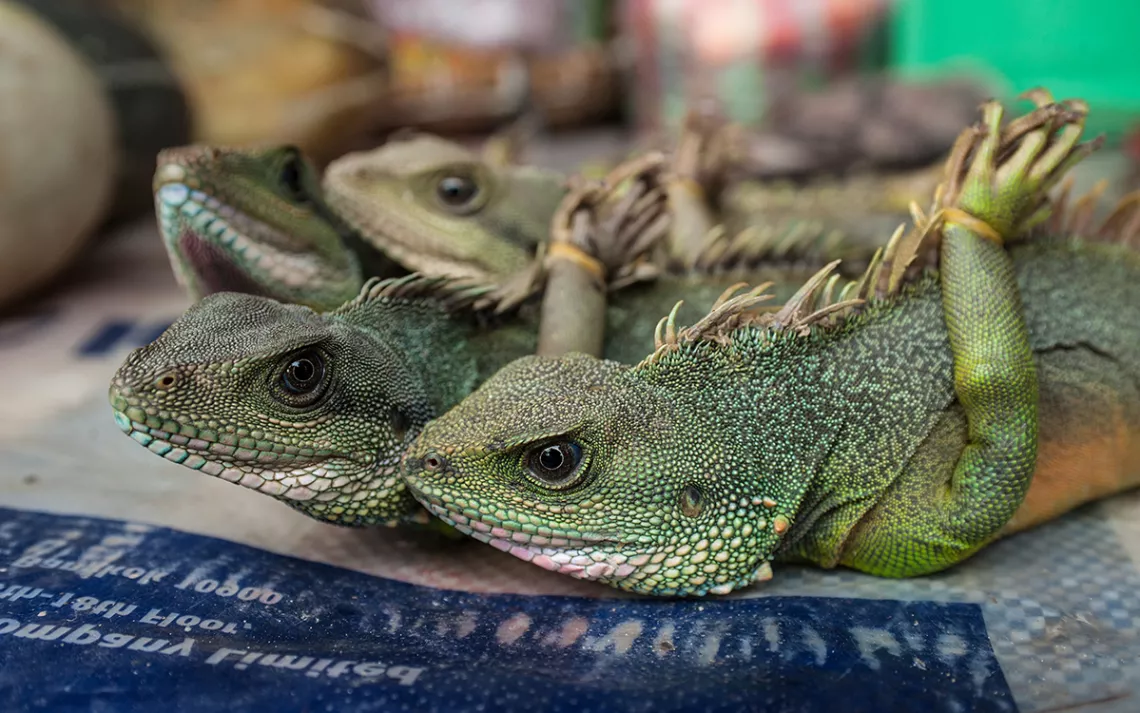
Green dragons at a rural market. | Photo by Signature Message/iStock
We may never know exactly how COVID-19 found its way into humans. Evidence points to the virus having originated in a horseshoe bat and then either being directly transmitted from bats to people, or else—like SARS and MERS, other recent coronaviruses—jumping into an intermediary species, such as a pangolin or an exotic animal farmed for human consumption, and then finding its way to us from there. The exact transmission path isn’t really of crucial importance, though, because the fact remains that wildlife trade presents myriad opportunities for such events to transpire. “The overarching message is that there is a spectacular amount of wildlife trade that’s simply unregulated,” says Stuart Pimm, the Doris Duke professor of conservation at Duke University.
The vast majority of wildlife trade is also legal. Since the pandemic began, however, much of the focus in the media and the scientific literature has been on the risks posed by illegal trade. While the illegal wildlife trade is significant internationally, worth some $23 billion annually, it is dwarfed by legal trade, valued at more than $400 billion annually. The value disparity is also reflected in the quantity of animals involved, with those legally traded likely outnumbering those illegally traded by a factor of 20 or more.
“People have a skewed idea of how large the illegal wildlife trade is relative to the legal trade, so everything negative—in this case, the spread of diseases—is attributed to the illegal part of the trade,” says Vincent Nijman, a conservation biologist at Oxford Brookes University in England. “But if I was worried about the spread of diseases, I would worry about the legal trade first.”
Among other regulatory problems with the legal wildlife trade—including a paucity of documentation about which species a shipment may contain, and where those animals have been—wildlife that crosses international borders is typically not subject to health inspections. The United States, for example, is one of the largest importers of live animals in the world, including exotic pets. But despite the tens of millions of living creatures that the US allows across its borders each year, only about 150,000 shipments are inspected, and of those, the majority are checked only for suspected violations of laws such as the Endangered Species Act rather than possible diseases. “The reality is that countries and traders, and ultimately consumers, do want goods to flow freely,” Nijman says. “So for most of the border crossings, all that is to be inspected is the paperwork, and if that is fine, the animals move.”
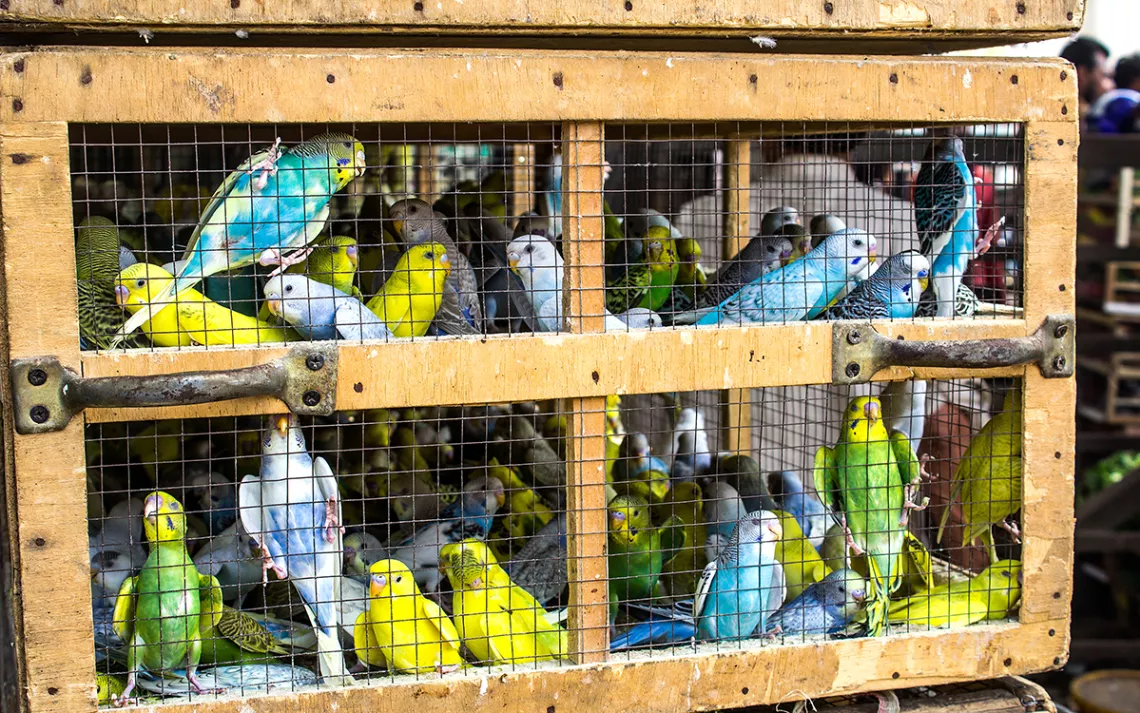
Photo by Faraz Hyder Jafri | Shutterstock
There are clear ways to reduce the risk of disease from the wildlife trade—things that seem obvious yet are hardly ever done. As a starting point, countries could enforce hygienic standards for capturing, farming, transporting, holding, and slaughtering wild animals. When shipping species across borders, authorities could start performing more regular, rigorous health inspections and, in some cases, require that animals be vaccinated or quarantined. Better documentation is also needed from start to finish, including information identifying the species being shipped, where it came from, where it has been, and who has come into contact with it throughout the process.
“There are gaps in the system that are very obvious, and we need to move now to fill them,” Scanlon says. “The costs associated with these changes are infinitesimal when you compare them to the cost and consequences of just one spillover.”
Outright bans for commercial trade of key, high-risk species groups, including many mammals and birds, would also greatly reduce the opportunities for new infectious maladies and pandemics to emerge. Taking a step in this direction, in April, the World Health Organization advised all governments to stop the trade of live wild-caught mammals, particularly for food. If governments complied, this would eliminate trade of some of the most high-risk types of wild animals, including bats, rodents, and primates.
So far, China has taken the most serious steps toward clamping down on disease risk from wildlife trade. In early 2020, the government temporarily banned the consumption of almost all wildlife for food, and in 2021, elevated that decision to law. China also created a new biosafety law and amended its Animal Pandemic Prevention Law, which formerly applied primarily to livestock, to include wildlife.
“Because of public safety and health issues, suddenly, we realized that if we lower the risk from wildlife, there’s huge economic losses we can avoid,” says Binbin Li, an environmental scientist at Duke Kunshan University in Suzhou, China.
The new wildlife consumption ban, which was widely publicized in the Chinese media, does seem to be having the desired effect. Relative to the country’s population, not that many people in China eat wildlife to begin with, Li says, and most who do try it out of curiosity. Unlike many other countries, Chinese consumers also don’t depend on wildlife as a source of protein. Now that the government has clearly spelled out that eating wild-caught animals is illegal, Li expects demand for those products to decline significantly. And while underground trade will probably continue for some diehard consumers, law enforcement has become much stricter around wildlife-related rules, she says.
There are still significant loopholes, though. China’s legal changes do not apply to the traditional medicine industry, for example, or to the fur industry. Around 13 species of wild animals are also still permitted to be eaten, but only if they come from farms with regulations mirroring those of the livestock industry. “I think there’s still a lot that needs to be done,” Li says. “But what happened in the last year is still pretty encouraging, and I think it’s a good start.”
Prolonged progress could be delayed, however, by politics. Specifically, in seeking to distance itself from the pandemic, Li fears that China might hesitate to publicly promote any further legislative changes it makes. In early 2020, China seemed to be emerging as a global leader in reforming the wildlife trade industry. But ever since Donald Trump and others began using the racist slur “China virus,” and seeking to place blame for the pandemic wholly on China, the Chinese government has clamped down on media stories related to COVID-19 and wildlife, Li says. “There’s actually been some really positive actions in China, but China does not want to publicize it anymore.”
The silence is not only a shame, Li continues, it may actually hinder further global progress by removing China as a trailblazer for change. “Other countries may feel like this is too complicated to do, but China shows that this is possible, that you can change the system,” she says. “If we don’t talk about what China is doing, people won’t know what changes happened here and why they are important.”
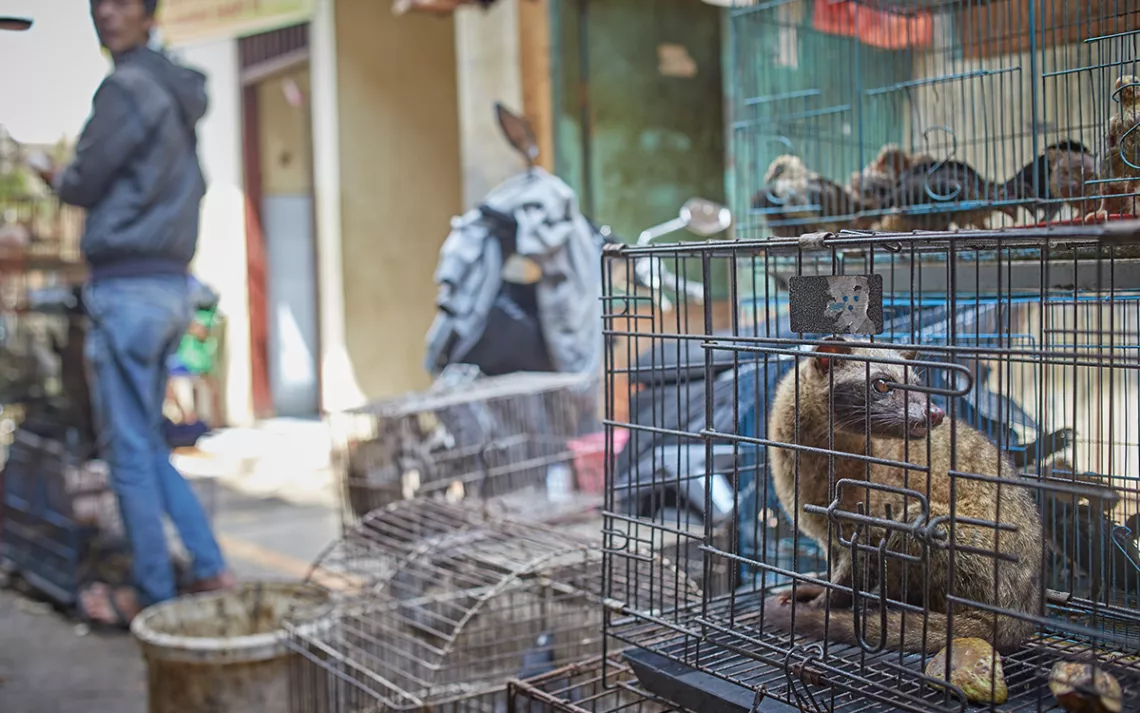
A city market in Jakarta, Indonesia, in March 2016 | Photo by Salvacampillo/iStock
Even with the example of China’s early, strong lead, other countries have not been as proactive. In March 2020, Gabon, for example, officially banned the sale and consumption of pangolins and bats, but stopped short of forbidding other forms of wild meat trade. Vietnam, a center for live wildlife trade, also acted quickly, issuing a directive that forbade wildlife imports into the country and halted the movement of wildlife between provinces. The Vietnamese prime minister also called for heightened enforcement of existing wildlife laws. But there’s no confirmation that these temporary changes will be made permanent, and much more is needed if Vietnam and other Southeast Asian countries are to effectively curb disease threats from wildlife trade, says Amanda Fine, the associate director of the Asia health program at the Wildlife Conservation Society.
“Legal reform is clearly required to update existing laws and regulations around wildlife trade,” Fine says. “When you couple the extinction risk associated with the wildlife trade with the risk of viral disease emergence along wildlife supply chains, the costs to our societies and our planet are clearly too high to allow the practice of wildlife trade to continue.”
There’s been only limited movement in Western countries, as well. Germany is looking to establish a one health office, for example, while in the United States, several bills are making their way through the Senate and the House. The bills would address development aid to help countries transition away from wildlife markets, as well as close live animal markets in the US. (The latter are not primary avenues for disease transmission, however.)
On the other hand, some countries, including Indonesia, Brazil, and Russia, have actually reversed course, relaxing environmental laws in an effort to make up for pandemic-driven economic losses by attempting to spur development. “Indonesia is going to be a huge concern coming out of the pandemic,” says Alice Hughes, a conservation scientist at the Chinese Academy of Sciences in Yunnan. “Their response so far is environmental deregulation.”
“When countries talk about recovery, that can’t include more deforestation and exploitation of wildlife,” Lieberman adds. “From a health perspective, that’s a recipe for another disaster.”
Indeed, as COVID-19 has so devastatingly shown, viruses do not respect national borders. Globalization ensures that what happens in one corner of the world quickly affects every other. “Zoonotic outbreaks have never been rare, but they’ve normally been small scale because they typically occurred in rural, unconnected areas,” Hughes says. “Now we all live in an interconnected society, and that tiny village is no longer isolated.”
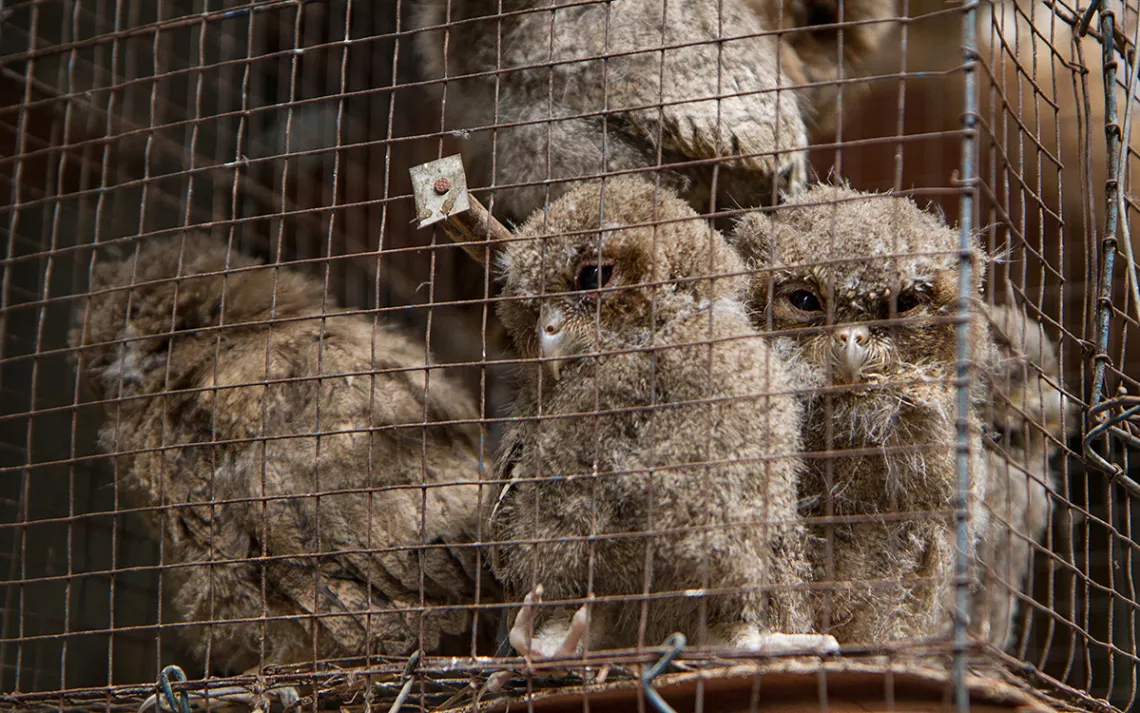
Baby owls in a cage at a market in Yogyakarta, Indonesia | Photo by Ibenk_88/Shutterstock
It’s for this reason that a number of groups and experts are pushing for the creation of a new international regulatory scheme that takes a one health approach to wildlife trade, drawing on multiple disciplines to keep animals, people, and the environment safe. While treaties and international organizations exist to address human health, livestock, wildlife conservation, and food, “nothing deals with the whole picture,” Lieberman says. “The silos are why we are in the midst of this pandemic.”
Such a treaty would ensure that “everyone’s abiding by a certain set of rules,” Scanlon adds, and also guarantee that those rules are still in place years from now, after COVID-19 has faded from memory.
The new framework would encompass issues of surveillance and preparedness for future novel diseases, as well as focus on closing live animal markets and supply chains to those markets, particularly for birds and mammals. Systems would be put in place to provide help with the transition for countries that need it. Any new treaty might also include exceptions for subsistence hunters and resources for eventually transitioning those communities over to reliable, sustainable alternatives.
There are two main proposed paths forward for creating this new framework. First, countries could decide to amend or adopt a protocol to an existing international treaty, such as the Convention on the International Trade in Endangered Species of Wild Fauna and Flora (CITES). CITES currently deals only with the conservation impacts of trade on species, but proponents think it could be expanded to include human and animal health, essentially updating the convention to better serve a post-COVID world. According to Scanlon, this strategy would take advantage of the fact that CITES already has a long-standing system of permits, authorities, and compliance mechanisms in place in almost every country. “It’s not the only way to do this, but we believe it’s the most effective and efficient way,” he says.
Others, however, argue for the creation of a completely new legal instrument. “CITES is about protecting species from becoming endangered by trade,” Lieberman says. “But we know this pandemic—or any spillover—has nothing to do with whether a species is endangered or common, legal or illegal, from the wild or bred in captivity.” CITES is also limited, she adds, by its focus on international trade rather than what occurs within countries.
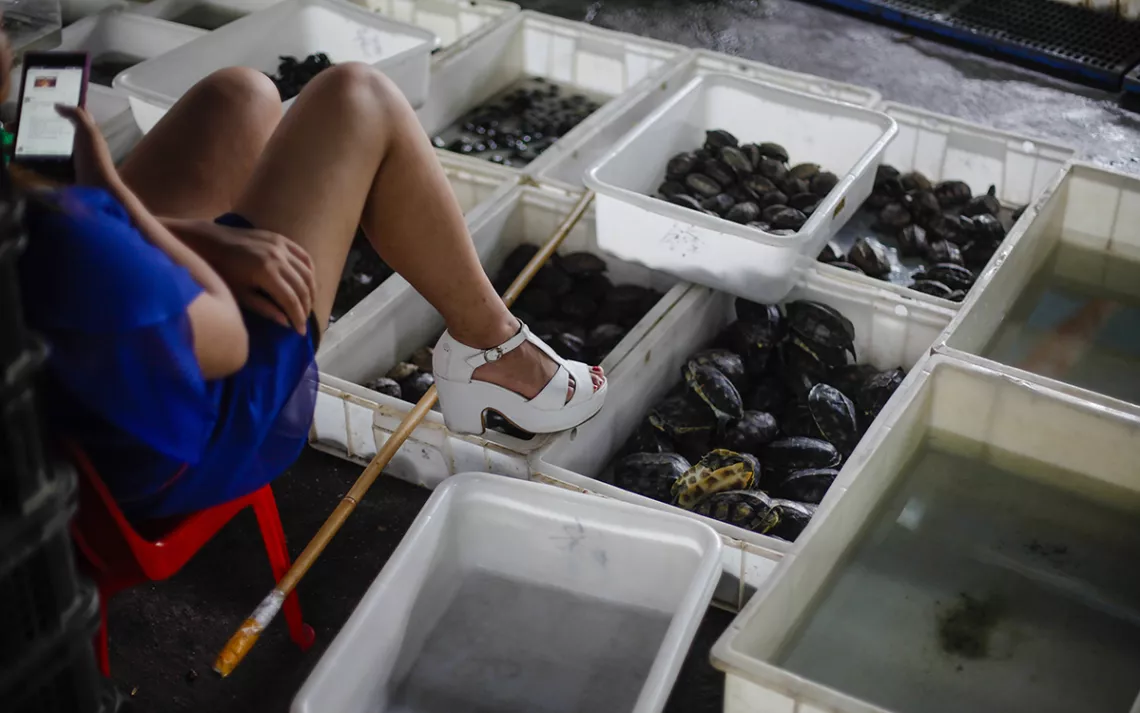
Woman selling turtles for aquariums in Yihe Market in Guangzhou, China | Photo by Plavevski/iStock
The ideal treaty that Lieberman and her colleagues have in mind would be one that takes a holistic look at all possible avenues of zoonotic disease infection, including deforestation and environmental degradation. The draft of this hypothetical new treaty has intentionally not yet been written, because proponents are waiting for a critical mass of governments, including a significant number from the global south, to agree to engage in negotiations.
Whether or not either of these efforts, or something similar, comes to fruition is yet to be seen. But Scanlon, Lieberman, and others are in discussions with governments about the need for a new approach and say the responses have been positive so far. Lieberman notes that the European Union, United Kingdom, and Chile, in particular, have expressed a strong interest in creating a new treaty. The United States “isn’t there yet,” Lieberman says, but will likely come around. She does not have insight into China’s level of interest.
Meanwhile, some two dozen countries have also called on the World Health Organization to create an international pandemic treaty. But that effort deals more with containment of future viruses and vaccine rollouts than with preventing outbreaks in the first place. While these plans are important to develop and could be a good starting point, on their own they fail to address the driver of the problem, Lieberman says. “Saying ‘We won’t change the wildlife trade but maybe we can get vaccines faster next time’ is not the solution.”
The tendency to fixate on the immediate crisis rather than big-picture drivers may come down to a fault of our psychology. As wildlife ecologist Alonso Aguirre told me back in January 2020, “Once a disease jumps into humans, all the responses are reactive and the focus is on human health. We never go back to the source of why these things happen in the first place.” To our species’ detriment, we are hardwired to minimize threats that seem distant or intangible—even if they pose a very real risk. Climate change, Nijman says, is a perfect example.
As COVID-19 vaccinations increased and face masks were cast aside earlier this year, many of us, Nijman says, quickly resumed our lives and forgot about the disease’s root cause. And in the midst of recent Delta-variant-driven outbreaks, few of us will spend much time or energy thinking about the next pandemic, or how to prevent it. It is essential, however, that the decision-makers upon whom we depend to secure our future do continue to think about this, even when the world returns to some semblance of normalcy. “I really don’t want to be having the conversation in five years about why we didn’t do enough,” Lieberman says.
For now, though, we still have the opportunity to override our natural tendencies toward inaction, forgetfulness, and the path of least resistance. We can opt instead to take action to protect ourselves and future generations—not to mention deliver a significant boon to conservation. “There are multiple benefits to biodiversity and to the climate, as well as to public health,” Scanlon says. “So let’s get on with it.”
This story originally appeared in bioGraphic, an online magazine about nature and solutions powered by the California Academy of Sciences.
 The Magazine of The Sierra Club
The Magazine of The Sierra Club
